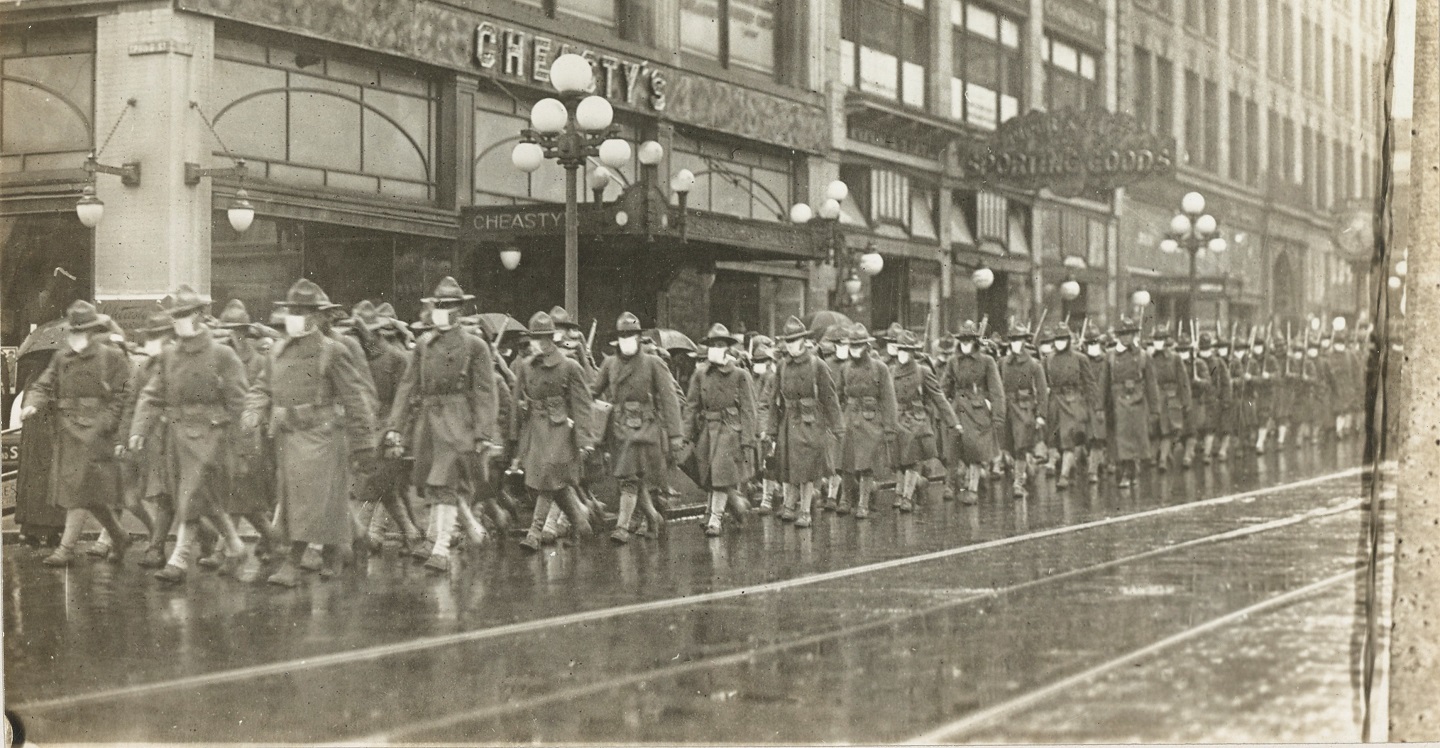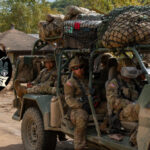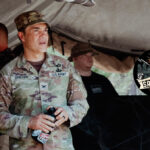
What we do know is that all of the movement of people and animals made this virus transmit much faster around the world than it would have otherwise. And you can directly associate it with the effects of the war.
A BETTER PEACE welcomes Michael Neiberg to examine the misnamed Spanish Flu of 1918. Neiberg joins our Editor-In-Chief Jacqueline Whitt as they consider the factors that lead to the devastation of that pandemic and how it relates to the modern day COVID-19 outbreak. What are the parallels, best practices and considerations that might be crucial to dealing with the present day pandemic?
Podcast: Download
Subscribe: Apple Podcasts | Spotify | Amazon Music | Android | Pandora | iHeartRadio | Blubrry | Podchaser | Podcast Index | TuneIn | Deezer | Youtube Music | RSS | Subscribe to A Better Peace: The War Room Podcast
Michael Neiberg is the Chair of War Studies at the U.S. Army War College. Jacqueline E. Whitt is an Associate Professor of Strategy at the U.S. Army War College and the Editor-in-Chief of WAR ROOM. The views expressed in this presentation are those of the speakers and do not necessarily reflect those of the U.S. Army War College, U.S. Army, or Department of Defense.
Photo Description: The 39th Regiment, wearing face masks provided by the Red Cross, marching in Seattle, Washington, prior to their departure for France.
Photo Credit: National Archives Photograph, December 1918.





This podcast is discussing on what to do about the Spanish flu and it came associated with Spanish kings and other people that stay in Spanish. Everybody should continue to wash their hands and always stay away from people six feet from each other. The flu spread fast and it move over the world and the deaths can be millions or billions or maybe more.
I’m also a student from Copiah Lincoln Community College and thank you Dr.Neiberg for letting me know everything about Spanish flu.
I am a student Ms. Jill Childress at Copiah-Lincoln Community College and I wanted to thank you, Dr. Neiberg,for teaching me more about the Spanish flu and giving me the history behind it instead of just the science. What I found most interesting about this podcast was the similarities that we are seeing today. No we are not in the middle of a war, but the world does feel very divided over this pandemic. I also enjoyed hearing the the background information of the Spanish flu, I did not realize how bad this pandemic was and I will be doing more research on it in the future. – Shelby Lang
My name is Savannah Madison and I am a student of Mrs. Jill Childress at Copiah- Lincoln Community College,and I just wanted to say thank you for teaching me about the Spanish Flu especially at a time like this. I find it really interesting that history has a way of repeating itself nearly 100 years later. Our present world and the world in 1918 are still similar with the trading of animals and things, so it makes sense that another global pandemic would come around again. We should start to do as you said at the end of your podcast, we should take this global problem and fix it with a global solution.
A very timely article! I would like to contribute some facts I have picked up from some genealogy my family has recently acquired. Two brothers from Minnesota, Hans and Swen Swensen, both died in 1918 from what was described as influenza or pneumonia. Both had registered for service in the Army, one being accepted and the other not. The graves of these two relatives have been the subject of a long and so far, fruitless search.
Swen, the one rejected for service, seems to have gone home with the virus and died, but no record of his death has been found. Might have been a private burial on the family farm. Hans died at Ft. Grant in Illinois in October 1918. At Camp Grant the hospital was overflowing with dying men and even most of the doctors and nurses. The lack of any information on a grave for Hans might be explained by the mass burials conducted at various sites in the U.S. in late 1918 and early 1919 (see Ft. Riley, Camp Devens, Philadelphia, Baltimore, Butler County, etc.). If any records were made of those so interned, I have not been able to find it. The commander at Ft. Grant, Col. C.B. Hagadorn, a Civil War veteran, was so despondent he committed suicide.
My grandfather and his 5-year old daughter died of the epidemic in the winter of 1918, and an odd detail about their deaths is worth noting. The doctors only method of fighting the disease was to prescribe fresh air. And so the windows in the hospital were left open. The winters in Iowa can bring sub-zero temperatures, so if the patients did not already have pneumonia, no doubt this would have given it to them.